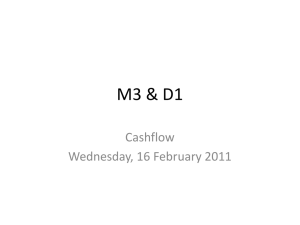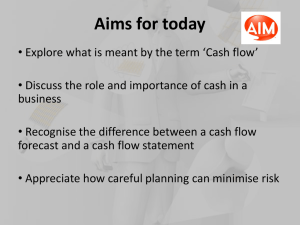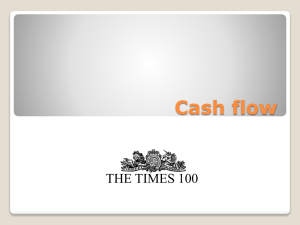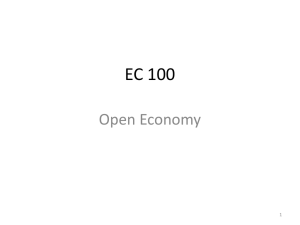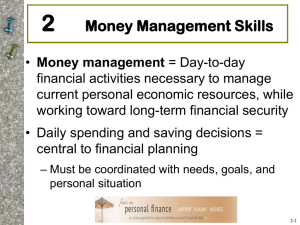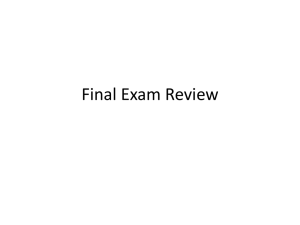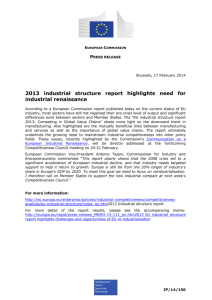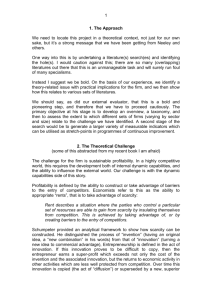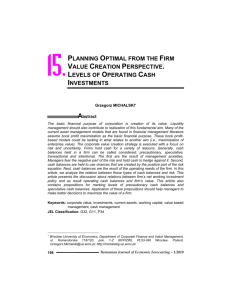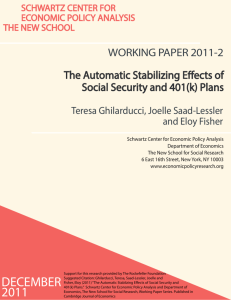Cash Flow Forecasting: Bakery & Ice Cream Van Worksheet
advertisement
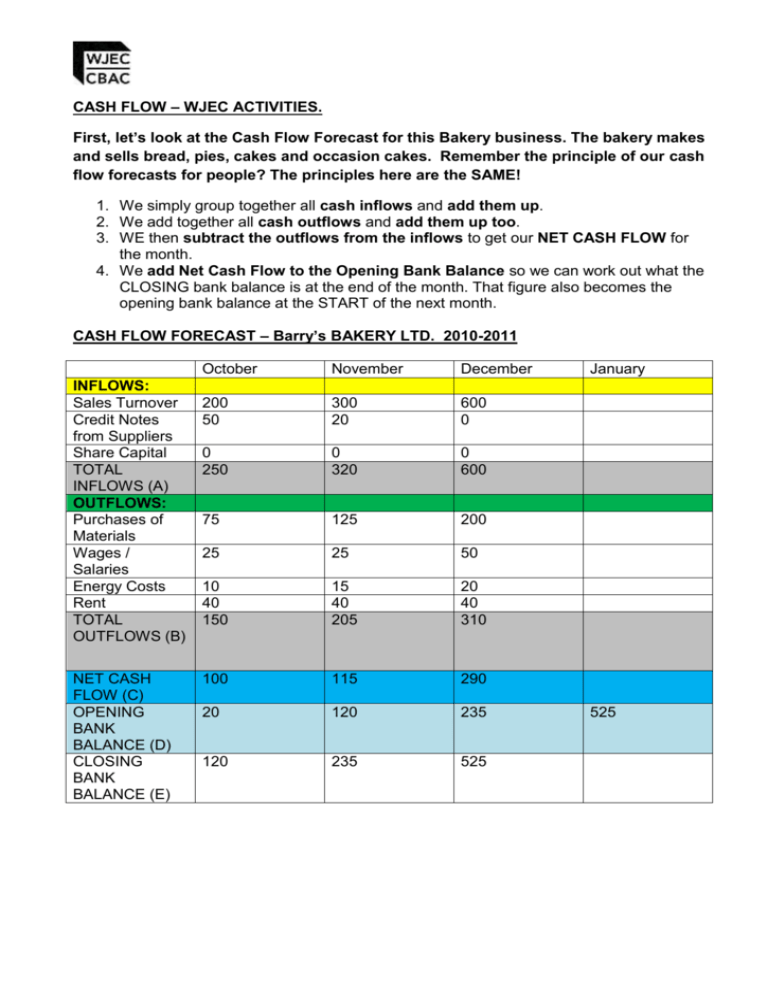
CASH FLOW – WJEC ACTIVITIES. First, let’s look at the Cash Flow Forecast for this Bakery business. The bakery makes and sells bread, pies, cakes and occasion cakes. Remember the principle of our cash flow forecasts for people? The principles here are the SAME! 1. We simply group together all cash inflows and add them up. 2. We add together all cash outflows and add them up too. 3. WE then subtract the outflows from the inflows to get our NET CASH FLOW for the month. 4. We add Net Cash Flow to the Opening Bank Balance so we can work out what the CLOSING bank balance is at the end of the month. That figure also becomes the opening bank balance at the START of the next month. CASH FLOW FORECAST – Barry’s BAKERY LTD. 2010-2011 INFLOWS: Sales Turnover Credit Notes from Suppliers Share Capital TOTAL INFLOWS (A) OUTFLOWS: Purchases of Materials Wages / Salaries Energy Costs Rent TOTAL OUTFLOWS (B) NET CASH FLOW (C) OPENING BANK BALANCE (D) CLOSING BANK BALANCE (E) October November December 200 50 300 20 600 0 0 250 0 320 0 600 75 125 200 25 25 50 10 40 150 15 40 205 20 40 310 100 115 290 20 120 235 120 235 525 January 525 Ian’s Ice-Cream Van – Cash Flow Forecast 2010 INFLOWS: Sales Turnover Credit Notes from Suppliers Share Capital TOTAL INFLOWS (A) OUTFLOWS: Purchases of Materials Wages / Salaries Fuel Costs Rent TOTAL OUTFLOWS (B) NET CASH FLOW (C) OPENING BANK BALANCE (D) CLOSING BANK BALANCE (E) March April May 100 0 100 0 200 0 0 100 0 100 0 200 40 45 130 10 10 60 20 0 70 35 0 90 70 0 260 30 10 (-60) 10 40 50 40 50 (-10) June (-10) 1. What advice would you give Ian for the month of May? Explain the reason for your advice too. 2. What would you expect to happen to his estimated sales figure for June? Explain why you think this? Now – fill in the gaps to complete the following cash flow forecast correctly. Then answer questions 3 to 6 on the sheet. Cathy’s Café Bar – Cash Flow Forecast 2010-11 INFLOWS: Sales Turnover Credit Notes from Suppliers Share Capital TOTAL INFLOWS (A) OUTFLOWS: Purchases of Materials Wages / Salaries Energy Costs Rent TOTAL OUTFLOWS (B) NET CASH FLOW (C) OPENING BANK BALANCE (D) CLOSING BANK BALANCE (E) October November December 300 50 ___________ 20 500 0 0 ___________ 0 400 0 ___________ 80 ___________ 200 ________ 50 10 40 150 10 40 250 100 50 800 __________ ____________ (-__________) 100 300 ___________ __________ 450 150 January 150 3. Explain why you think Cathy’s purchases of materials and energy costs rise quite a bit in December compared to October and November. 4. Fully explain what you think the difficulties and problems might be when businesses try and do cash flow forecasting. 5. Why might using spreadsheet software help a business create a Cash Flow Forecast? 6. If when a business compares its ACTUAL cash flow with its cash flow forecast, the cash flow forecast is constantly UNDERESTIMATING the amount of cash INFLOWS, what advice would you give the business about what it should do with its Cash Flow Forecast Table? October November December January October November December January INFLOWS: Sales Turnover Credit Notes from Suppliers Share Capital TOTAL INFLOWS (A) OUTFLOWS: Purchases of Materials Wages / Salaries Energy Costs Rent TOTAL OUTFLOWS (B) NET CASH FLOW (C) OPENING BANK BALANCE (D) CLOSING BANK BALANCE (E) INFLOWS: Sales Turnover Credit Notes from Suppliers Share Capital TOTAL INFLOWS (A) OUTFLOWS: Purchases of Materials Wages / Salaries Energy Costs Rent TOTAL OUTFLOWS (B) NET CASH FLOW (C) OPENING BANK BALANCE (D) CLOSING BANK BALANCE (E)
